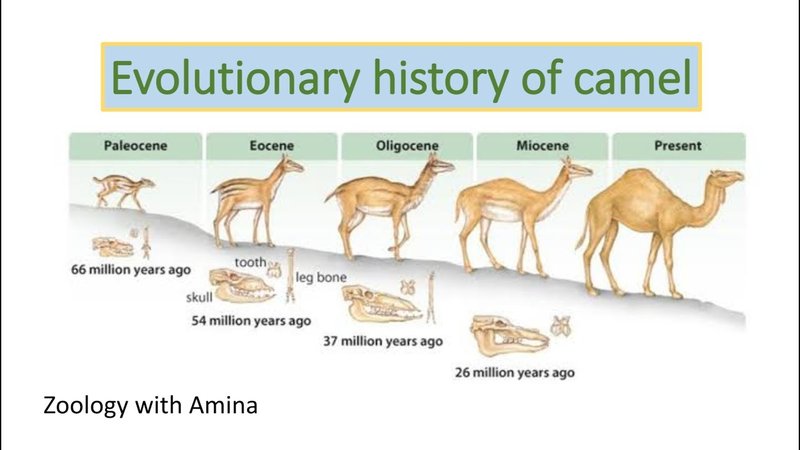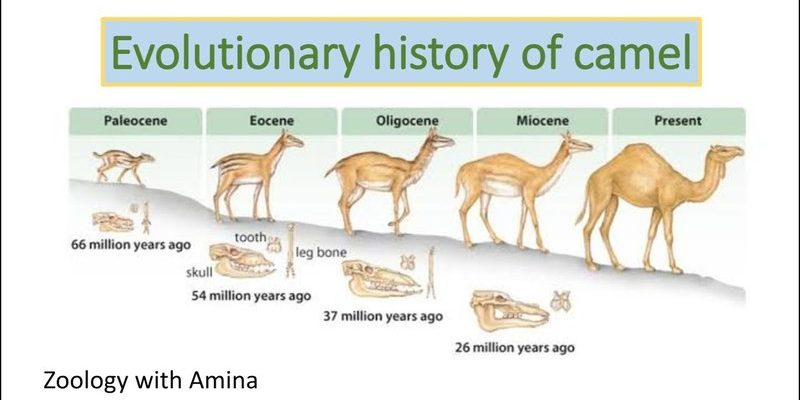
Imagine for a moment that you’re in a grand museum, looking at different exhibits showcasing ancient life forms. Each display is like a page in the story of the camel, revealing how these incredible animals have developed unique features to thrive in harsh environments. From their distinctive humps to their ability to go for long periods without water, camels are true wonders of nature. So, let’s embark on this journey through time and explore how camels evolved into the creatures we know today.
From Ancient Ancestors
The story of camels starts millions of years ago. Believe it or not, their ancestors roamed the forests of North America around 40 million years ago! These ancient relatives were quite different from the camels we see today. They were about the size of a dog and had long legs, similar to today’s modern camels, but they weren’t built for the arid deserts.
As time passed, climate change transformed vast forested areas into dry terrains. This shift forced some of these creatures to adapt. Picture them gradually evolving to cope with increasing temperatures and dwindling water sources. Over millions of years, these early animals developed longer legs, wider hooves for walking on sand, and other adaptations to help them survive in open areas. It’s quite fascinating to think about how these small changes led to the camels we recognize today.
The Rise of the Dromedary and Bactrian Camels
Fast forward to the last few million years, and you’ll find two prominent types of camels: the dromedary and the Bactrian. Dromedaries, with their single hump, adapted well to hot, arid environments, becoming the go-to animal for desert dwellers. They are built like living tanks, able to travel long distances without water, making them perfect for trade routes.
On the other hand, the Bactrian camel, which has two humps, adapted to colder climates. This breed thrives in regions with harsh winters, like Central Asia. The double hump serves as a reservoir for energy-rich fat, which can be converted into water when needed. This adaptability allowed these camels to flourish in diverse environments, proving just how flexible and resilient they can be.
Unique Adaptations for Survival
One of the most remarkable aspects of the camel’s evolution is their array of adaptations that enable them to survive in extreme conditions. Let’s break down some of these features:
- Water Conservation: Camels can lose up to 25% of their body weight without serious health risks. They also have the ability to drink large amounts of water in a short span, soaking up to 40 gallons at a time!
- Temperature Regulation: Their body temperature can fluctuate significantly, reducing the need for perspiration during the hottest parts of the day. This ability helps conserve precious water.
- Thick Fur and Skin: Bactrian camels have thick fur that insulates them against the cold while dromedaries have shorter, lighter coats that protect them from the sun.
These adaptations not only show how camels have evolved but also highlight their incredible resilience. Imagine walking across the desert, with the sun blaring down and not a drop of water in sight, yet you can still keep going. That’s the camel’s superpower!
The Role of Camels in Human History
As camels evolved, so did their relationship with humans. Historically, they played a critical role in transportation and trade, especially in arid regions. Picture ancient traders crossing the Silk Road, the famous trade route that connected East and West, using camels to carry their goods. Without these sturdy animals, many of those journeys would have been impossible.
In various cultures, camels have been more than just beasts of burden. They’ve been symbols of endurance and resilience. In many Middle Eastern and North African cultures, camels are often referred to as the “ships of the desert,” showcasing their importance in transport and trade. They helped shape civilizations by connecting isolated communities, allowing for the exchange of ideas, cultures, and goods.
Modern-Day Camels: Conservation and Challenges
Today, camels face different challenges than their ancestors did. While they are still used for transportation and labor, their populations are at risk due to habitat loss, climate change, and human interference. As urban areas expand, the environments that these majestic animals thrive in are shrinking.
Conservation efforts are underway in many regions to protect wild camel populations and their habitats. Efforts include establishing reserves and promoting sustainable practices that help maintain their natural environments. By understanding the evolutionary history of the camel, we can appreciate not only their past but also the importance of ensuring their future on our planet.
The evolutionary history of the camel is a rich tapestry woven over millions of years. From their ancient ancestors to the modern-day travelers of the desert, camels represent adaptability and resilience. As we continue to learn about these unique creatures, it becomes increasingly clear that their story mirrors our own—one of survival, change, and connection.
Next time you see a camel, take a moment to appreciate not just the animal itself but the incredible journey it has taken through time. Their evolution reminds us of the beauty of nature’s design and the importance of preserving it for future generations. So, let’s continue to celebrate these amazing creatures and ensure their legacy continues!

